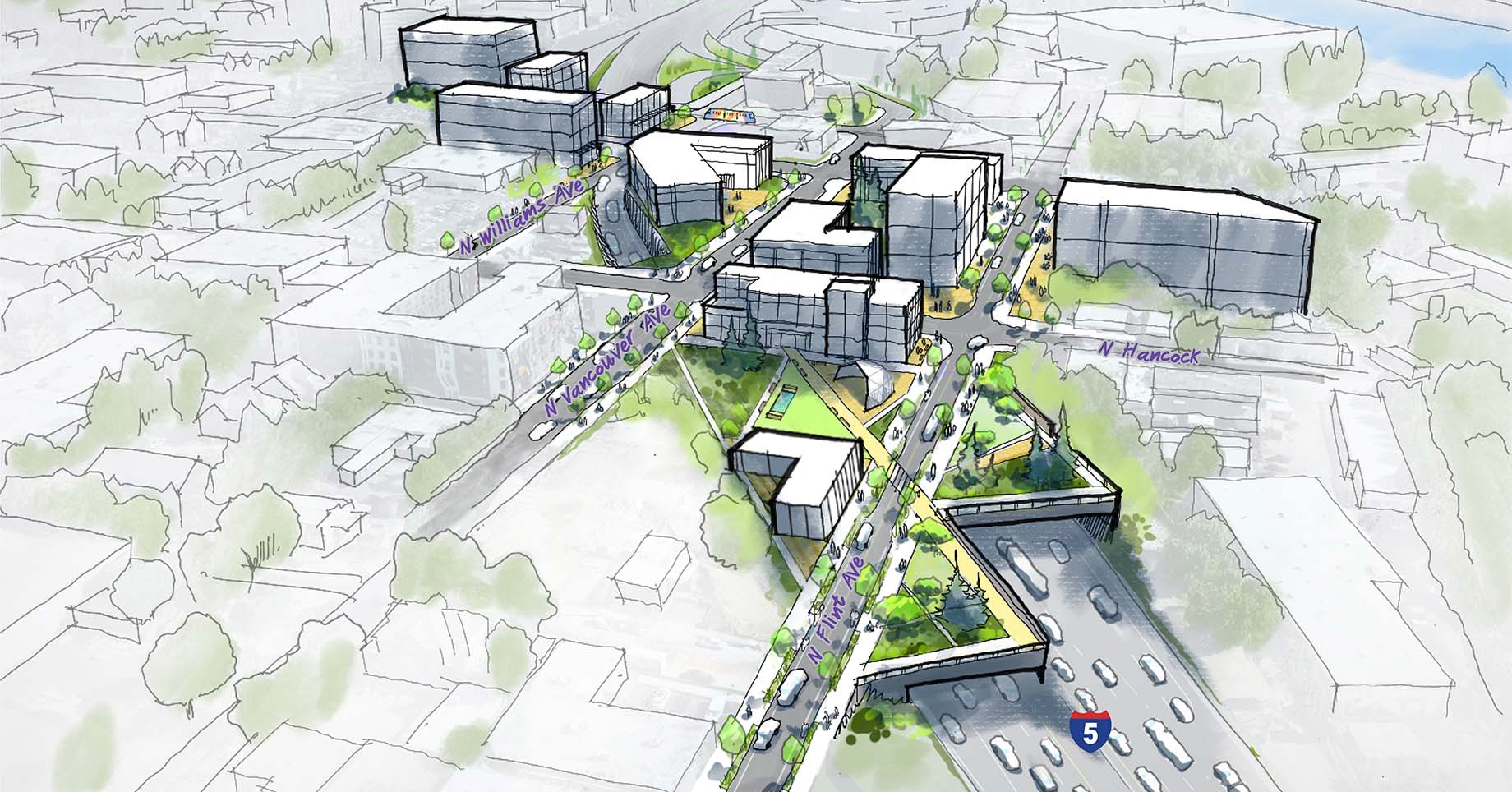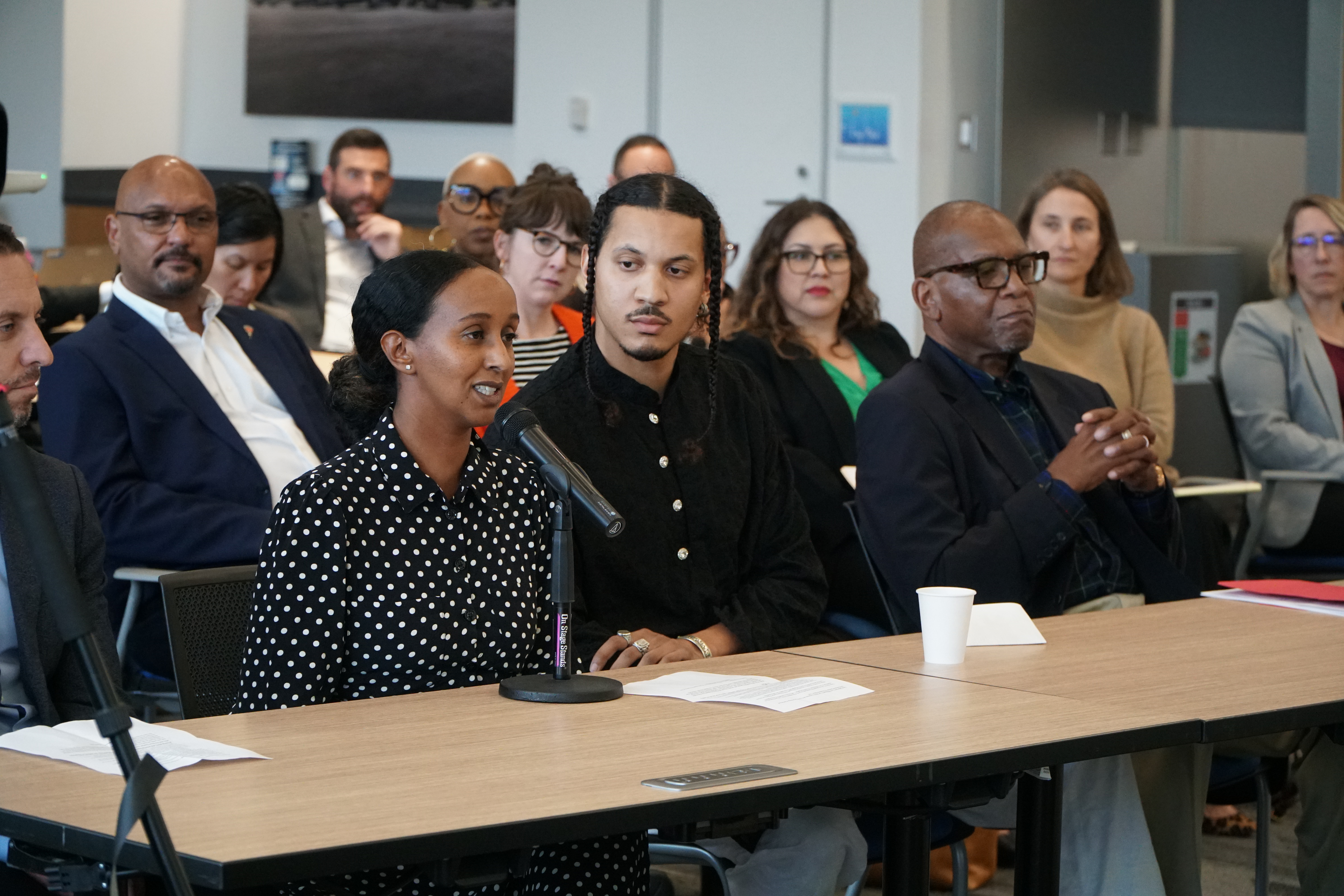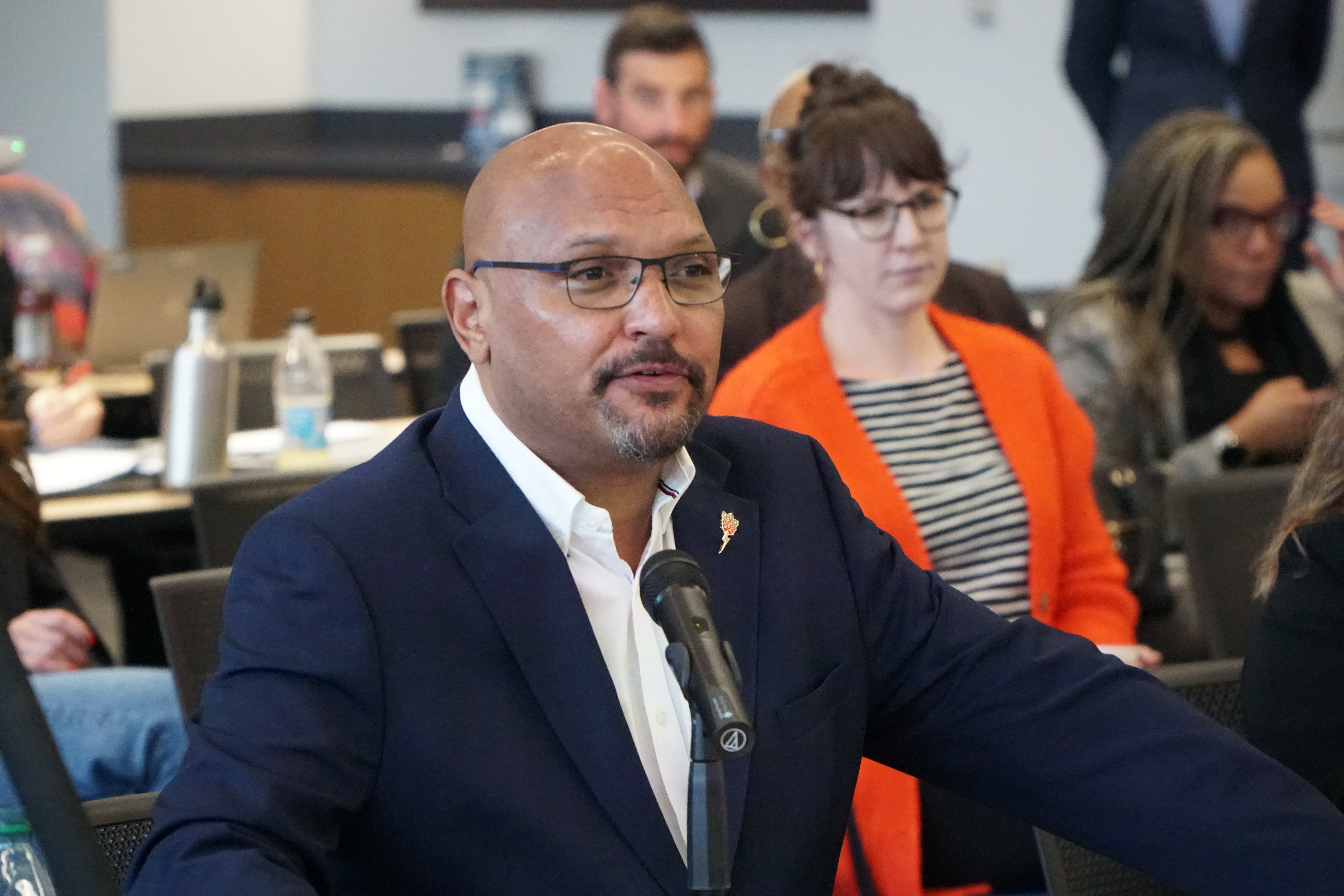About
News
Rose Quarter Partners Share Vision for Portland's Albina Community

A joint panel of partners and community supporters of the I-5 Rose Quarter Improvement Project came together in a show of unity around their collective vision for the Albina area and commitment to the project at the November Oregon Transportation Commission meeting. Panelists focused on the importance of this project as part of a larger vision to reconnect and revitalize the Albina community.
Another key theme was the partnership needed to achieve this ambitious, innovative project. “This is something that is a moonshot, but it can be done,” said Historic Albina Advisory Board member Kevin Modica. “It is a generational project … that can restructure and strengthen viability not only in northeast Portland but the state of Oregon.”
This view was shared by panelists and commissioners. Improvements planned for this 1.8-mile stretch of I-5 will improve the flow of goods and increase safety through Oregon’s top bottleneck.
The project would also have far-reaching impacts by creating jobs in Black and minority communities. And the planned highway cover will help reconnect the Albina community that was severed with the construction of I-5 in the 1960s.
 The panel included testimony from:
The panel included testimony from:
- Kevin Modica, Historic Albina Advisory Board Member.
- Winta Yohannes, Albina Vision Trust Executive Director.
- JT Flowers, Albina Vision Trust Communications & Development.
- Dewayne Hankins, Portland Trail Blazers/Rip City Management President of Business Operations.
- Carmen Rubio, City of Portland Commissioner.
- Mingus Mapps, City of Portland Commissioner.
Albina Vision Trust and City of Portland commissioners echoed the sentiments shared by Modica, with optimism for the partnerships moving forward.
“To mend means to grow. Let us walk toward tomorrow as shared stewards of a precious dream couched in an interstate highway redevelopment project,” said JT Flowers from the Albina Vision Trust. He went on to describe this work as “a radical idea that connection can be capital, community can heal, and healing can transform what is possible for generations of Oregon children.”


Rip City Management stressed the importance of the I-5 Rose Quarter Improvement Project to support a growing entertainment and sports district, as well as the broader vision to restore and reimagine the community of Albina.
“When we think about this project, and the area of Portland it impacts, we see it through the lens of what our future could look like. And that’s a future that has a reconnected Albina neighborhood and supports a vibrant Rose Quarter that is a thriving bustling place 365 days a year,” Rip City Management President of Business Operations Dewayne Hankins said.
Oregon Transportation Commissioners responded to the panelists with resounding appreciation for their work, their support for this project, and the partnerships they are bringing to the table. We’re excited that the changes we’ve made to this project have generated renewed support for the project.
ODOT continues to seek funding opportunities to prepare the project for construction. We have applied for $850 million in federal grant funding from a program dedicated to fostering equitable development and restoration by reconnecting communities cut off from economic opportunities by transportation infrastructure.
This grant application is one of the largest applications the agency has ever made. Receiving the grant would be an important step in realizing the vision of reconnecting neighborhoods, improving the transportation network, and taking part in a collective movement toward restoring the historic Albina community.

